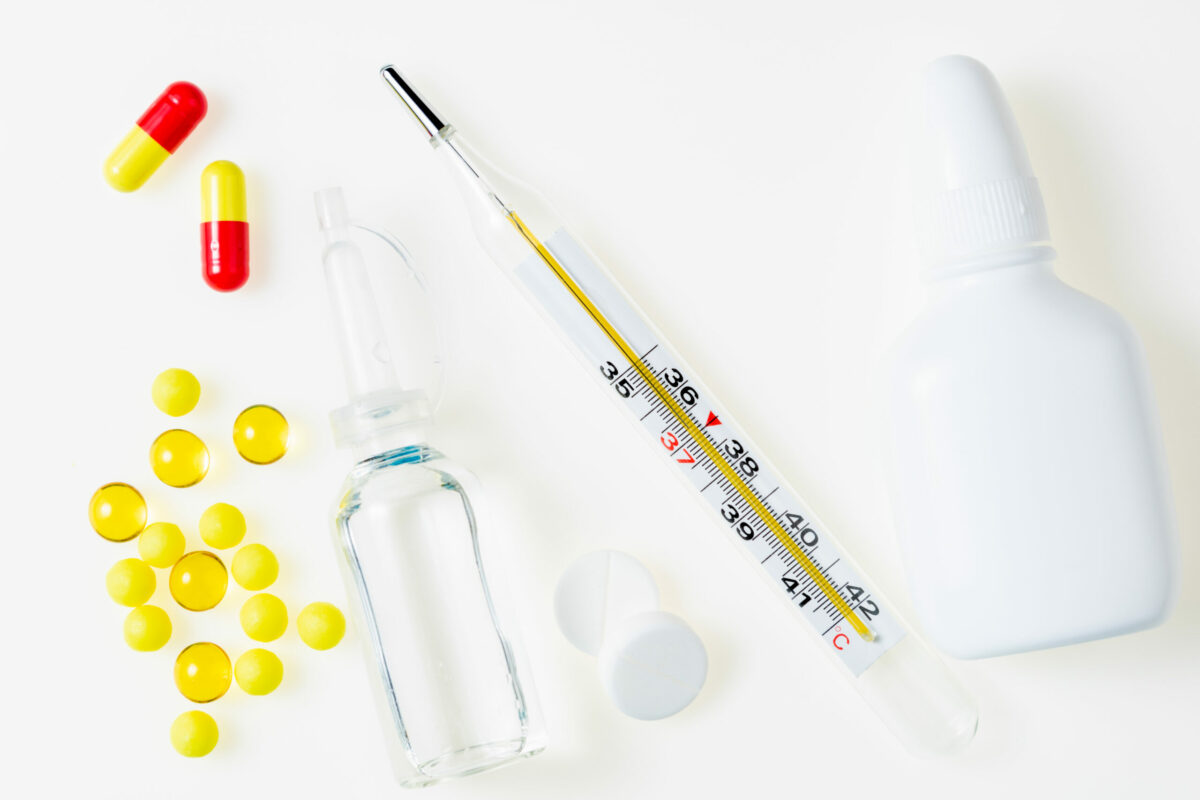This is a health condition caused by salmonella bacteria and it is known as typhoid fever or enteric fever. However, it is a rare condition in places where water is treated to destroy germs and human waste disposal is well managed. For instance, in the United States, this condition occurs in rare cases. The most commonly diagnosed typhoid fevers are in Africa and South Asia. In any case, it is a serious health problem, especially in children.
Food and water that contain this bacteria cause typhoid fever. It also can occur through contact with close people who have this bacteria. The primary symptoms include high body temperature and diarrhea.
The most common medicines prescribed to treat this condition are antibiotics. They help to destroy the bacteria and people begin to feel better within a week. Another way to protect you from getting this condition is vaccination. However, it cannot ensure your protection from all salmonella strains.
Symptoms
In most cases, the typhoid fever symptoms begin slowly and can worsen over time if not treated. Check below some of them:
Early Symptoms
- Chills
- Headaches
- Muscle aches
- Diarrhea
- Constipation
- Rash
- Weakness
- Fatigue (extreme tiredness)
- Fever (104 F or 40 C degrees)
- Loss of appetite, sweating, and cough can also appear but in rare cases
Later Symptoms
Once you get infected, some intestinal problems can happen after several weeks. These include swollen stomachs, stomach pain, and sepsis. However, if you experience a severe typhoid form, you may also experience confusion and difficulty focusing or concentrating.
Immediately contact your healthcare professional if you experience any of the previous symptoms.
Causes
This health condition is provoked by a bacteria strain known as Salmonella enterica serotype typhi. In case you get other salmonella strains, people get a similar condition known as paratyphoid fever.
Infected people spread the bacteria through their stool and urine. Therefore, if a person touches objects in the bathroom after an infected individual can also get this bacteria. Salmonella can also spread through food including raw fruits, uncooked meat, untreated water, unpasteurized milk or juice, and others.
Mostly, those who get treatment, do not have this bacteria in their bodies at all. However, some people may still have this bacteria and they are known as chronic carriers. Such people do not have any symptoms but they also can spread the salmonella bacteria to other people.
Risk Factors
This condition negatively affects millions of people around the world each year. If you are living in countries where typhoid fever is rare you may be at higher risk in the following cases. For example:
- Travel or work in places where is established.
- In case you are working as a clinical microbiologist and handling salmonella enterica serotype Typhi bacteria.
- You are in contact with people who carry this bacteria or have had typhoid fever recently.
Complications
One of the typhoid fever complications is bleeding in the intestines. It also destroys cells in the small or large intestines, which may lead to sepsis. This is a serious health condition that requires medical care right away. Check below other complications:
- Inflammation of the heart muscle (myocarditis) and valves (endocarditis)
- Mycotic aneurysm (inflammation of the major blood vessels)
- Pneumonia
- Pancreatitis (inflammation of the pancreas)
- Bladder or kidney infections
- Meningitis (is a condition in which the fluid around the brain and spinal cord become inflamed)
- Psychiatric issues (including hallucinations, paranoid psychosis, delirium, and others)
Is it Possible to Prevent Typhoid Fever?
Yes, by getting vaccinated. This is a good option to prevent typhoid fever, especially for those who live or work in places with higher risk. Some people also get this vaccine when traveling.
Moreover, it is important to get treated water and wash regularly your hands before eating or preparing food.
There are two forms of vaccines for typhoid fever in the U.S. for people age 2 and older. These include injections and capsules that are taken orally (one capsule daily). However, the effectiveness of this vaccine decreases over time and you will need to get the vaccine repeatedly. You should know that the vaccine cannot protect you completely and the following tips can help. Examples include:
- Wash regularly your hands using soap and warm water or use alcohol-based sanitizers.
- Do not drink untreated water because it may contain this bacteria.
- Avoid raw vegetables and fruits
- You should also not eat foods stored at room temperature
Check below some tips that will help to prevent spreading the bacteria to other people:
- Do not prepare food until your healthcare professional tells you you are no longer contagious.
- Regularly wash your hands for at least 30 seconds after using the toilet or before a meal.
- Administer the antibiotics exactly as prescribed by your doctor. Otherwise, the bacteria can survive, which leads to the return of the condition.
Diagnosis
In case you suspect you have typhoid fever, you should visit a doctor. Healthcare providers usually ask you questions about medical and travel history and symptoms you experience. Mostly, they diagnose the condition by growing salmonella bacteria in a sample of the body fluids or tissues.
Body Fluid or Tissue Culture
This is a procedure in which doctors collect blood, stool, urine, or bone marrow samples and place them in special environments where these bacteria can grow easily. This test is also known as culture and it is verified by doctors under a microscope for typhoid bacteria.
Treatment
The primary treatment used for typhoid fever is antibiotics. The antibiotic type your doctor prescribes depends on where you get the bacteria, the symptoms, and the severity of the condition. Check below the most common prescribed antibiotics:
- Fluoroquinolones – Sometimes the bacteria can live despite treatment. These bacteria are known as antibiotic-resistant. Doctors usually prescribe Ciprofloxacin to destroy the bacteria and prevent its multiplying.
- Cephalosporins – These medications prevent the bacteria from building cell walls. One of the prescribed cephalosporins is Ceftriaxone.
- Carbapenems – This antibiotic category is commonly prescribed by doctors when other medicines do not work.
Check below other treatment options:
- Fluid drinking – This option helps keep you hydrated because some typhoid fever symptoms can lead to dehydration. These include vomiting and diarrhea.
- Surgery – This procedure is usually used when a person’s intestines are damaged and can be repaired with surgery only.
Frequently Asked Questions
Which body organs are usually affected by typhoid fever?
Not treating this condition may lead to other health problems because it negatively affects other body organs. These include gallbladder, liver, spleen, lymph nodes, and others.
What foods should be avoided by people with typhoid fever?
- Raw fruits
- Vegetables
- Oats
- Barley
- Seeds
- Whole grains
- Nuts
- Legumes
For a complete list, discuss it with your physician.
How long the typhoid fever usually lasts?
In most cases, the condition lasts up to 14 days after you get the bacteria. If you receive treatment later, this illness can last up to 1 month. If you have other questions, ask your healthcare professional.




